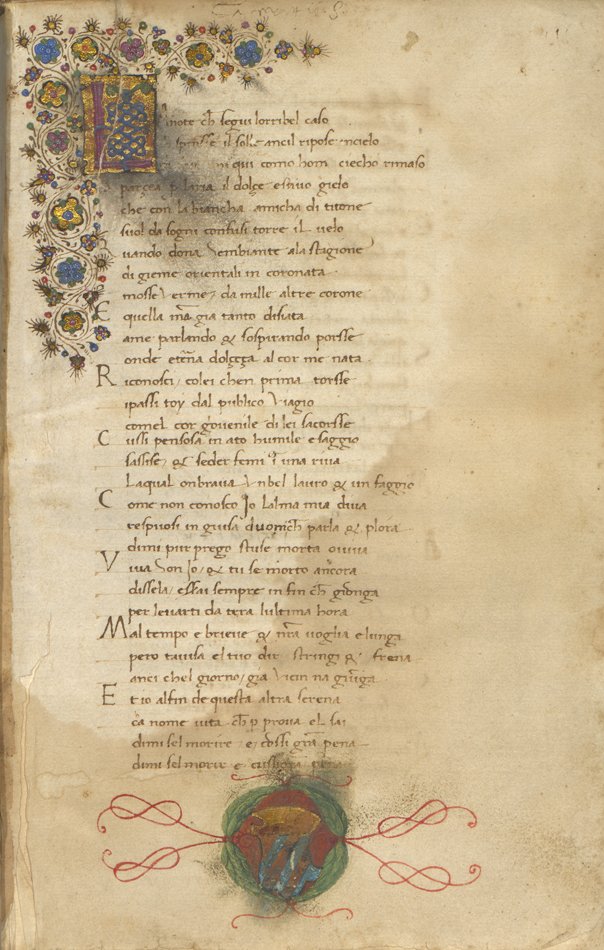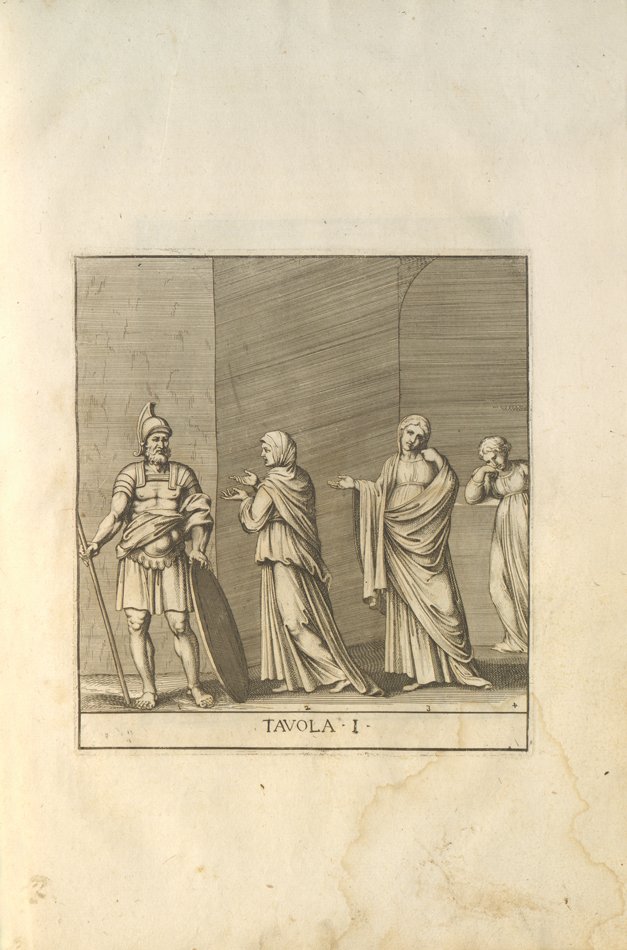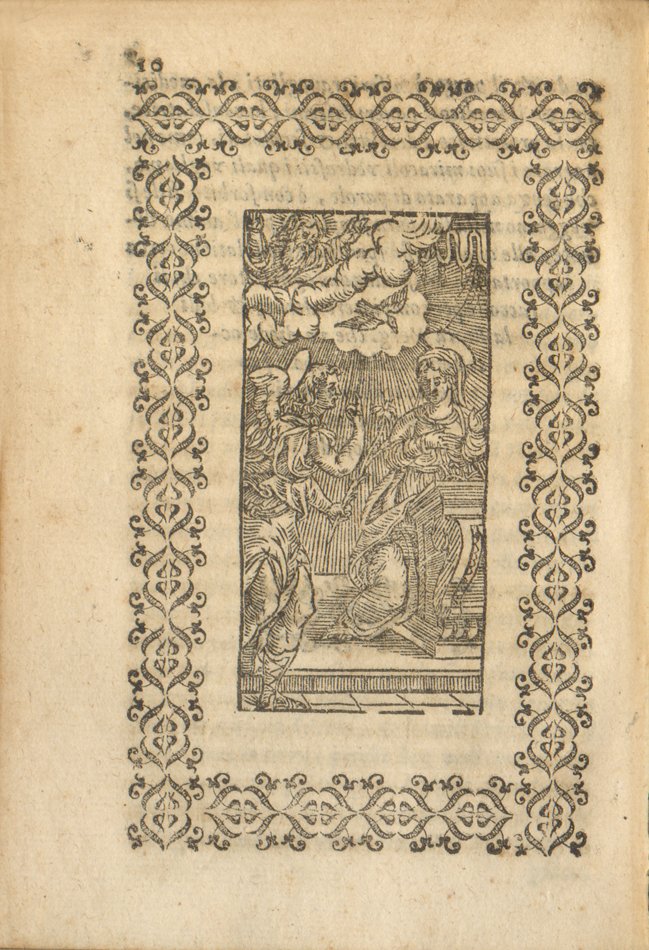Legacy of Petrarch
Cosette Bruhns
Petrarch’s vernacular poetry greatly influenced fifteenth-century Italian literature. Many lyric poets imitated Petrarch’s themes and use of language, and his Canzoniere helped form Italian literary language. His interest in visual art and descriptions of the portrait of his beloved Laura raised questions about the nature and role of visual art, themes addressed in the poetry of Vittoria Colonna (1492-1547) and Michelangelo Buonarroti (1475-1564). A tension existed between the act of writing and the act of making, and Petrarch’s written descriptions were an intersection of rhetoric and visuality that raised the question of which was the superior mode of expression. Petrarch’s depictions of literary, historical, and mythological figures in the Trionfi provided artists with vivid sources for figurative interpretation. His description of a triumphal procession that drew on Boccaccio and Dante displayed the interplay of powers ancient and modern, earthly and celestial. These unprecedentedly rapid transformations of sights and sounds triggered many explosive changes and social backlash which characterized the Italian Renaissance.

Francesco Petrarca (1304-1374)
1450
Codex Manuscript Collection, Gift of Frank Wakeley Gunsaulus
Petrarch’s Trionfi narrates a vision in which he contemplates a succession of six allegorical triumphs: Love, Chastity, Death, Fame, Time, and Eternity. The procession of triumphs is meant to instruct him in how to move past his earthly attachment to his beloved Laura. Petrarch’s descriptions bear structural resemblance to fourteenth century pictorial cycles depicting similar content, such as Giotto’s frescoes in the Scrovegni Chapel, with narrative and allegorical elements side by side. Although Petrarch never explicitly refers to works of art, the structure of the text reveals his familiarity with the visual culture of his time, and shows the ways in which writers appropriated visual narrative techniques.

Vittoria Colonna (1492-1547)
Parma: Antonio Viotti, 1538
Rare Books Collection
Roman noblewoman Vittoria Colonna was one of the most renowned female writers of the Renaissance. Colonna mentored Michelangelo, with whom she exchanged many poems and letters addressing the themes of love and loss, such as in the poems featured here, as well as artistry. In a well-known poem, she specifically examines a portrait of the Virgin, attributed to Saint Luke. She initially acknowledges the painter’s sincere attempt to accurately render the Madonna’s face, before noting the limitations of this challenging endeavor. She closes the poem by recognizing the artist’s choice of stylistic simplicity, allowing inspiration from God to guide the work.

Giovanni Pietro Bellori (1613-1696)
In Roma: Nuova stamparia di Gaetano degli Zenobj, 1706
Rare Books Collection
Classicizing trends introduced by Petrarch continued to be prevalent in Italian visual culture into the 17th century. The work of Giovanni Bellori, an artist and renowned scholar of seventeenth-century art theory, reflects this enthusiasm for antiquity, taking up topics such as ancient art and monuments. This work is a collection of engravings illustrating Roman paintings with accompanying descriptions. Such classical motifs inspired much interior decoration in seventeenth-century homes. Bellori’s work in both art criticism and painting place him within the tradition of multifaceted Italian writers and artists active in both fields.

Leandro Alberti (1479-1552)
Bologna: Appresso gli heredi di Gio. Rossi, 1598
Rare Books Collection
This text by Leandro Alberti, a Dominican writer and historian, is a history of a painting of the Virgin attributed to Saint Luke the Evangelist, the patron saint of painters, in a convent in Bologna. The icon became an important part of civic religious practices in the city in the fifteenth century because it was believed to have been painted during the Virgin’s lifetime. The symbolic importance of this painting attracted both writers, like Alberti and Vittoria Colonna, and artists, who often replicated the image.
